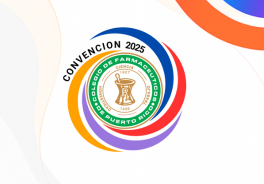- PO Box 360206 • San Juan Puerto Rico 00936-0206
- 787-753-7157
- hbarreto@cfpr.org
- (0)
20. PAIN MANAGEMENT PART 2: ADVANCED PHARMACOLOGICAL TREATMENT


Objetivos
At the conclusion of the activity, participants should be able to
Pharmacists
- Discuss the principles of pharmacologic analgesic therapy of narcotic analgesic medications (MOA, indications and uses, routes, dosing, contraindications, adverse events, with emphasis on labeled warnings, drug interactions both pharmacodynamic and pharmacokinetic).
- Identify key safety strategies for use with these medications in dosing, storage, disposal of used, availability of and access to antagonists, for the emergency treatment of overdose, pain management after an overdose.
- Explain the management of patients on narcotic analgesic and its appropriate use in patients with acute and chronic pain, ongoing management of patients, long-term management, monitoring of patient adherence to the treatment plan.
- Discuss the 2022 CDC guidelines for pain management.
- Identify signs and symptoms of use disorder.
- Explain how to safely taper these analgesics, including potential harm from sudden discontinuation or rapid dose decreases in patients who are physically dependent on narcotic analgesic.
- Recognize the importance of patient education.
Pharmacy technicians
- Identify the principles of pharmacologic analgesic therapy of narcotic analgesic medications (MOA, indications and uses, routes, dosing, contraindications, adverse events, with emphasis on labeled warnings, drug interactions, both pharmacodynamic and pharmacokinetic).
- Identify key safety strategies for use with these medications in dosing, storage, disposal of used, availability of and access to antagonists, for the emergency treatment of overdose, pain management after an overdose.
- Identify signs and symptoms of use disorder.
- Identify how to safely taper analgesics, including potential harm from sudden discontinuation or rapid dose decreases in patients who are physically dependent on narcotic analgesic.
- Recognize the importance of patient education.
- Recognize the role of the pharmacy technicians as part of the pharmacy team.
Detalles del Curso
| Clase: | Presencial |
| Audiencia: | Farmacéuticos Colegiado Farmacéuticos No Colegiado Técnicos de Farmacia Otros |
| Categoría: | Farmacéuticos: 1 Knowledge Técnicos de Farmacia: 1 Knowledge |
| Recurso: | SUASY C ACEVEDO MUÑIZ |
| Salón: | BAHIA |
| Horas de Crédito: | 2.00 |
| Fecha de Expiración: | 8/23/2025 |
| Duración: | |
| Precio: | Varia |
| Código de Acreditación: | 0151-0000-25-026-L08-P 0151-0000-25-026-L08-T |
| Asientos Disponibles: | 84/90 |
Requerimientos
20. PAIN MANAGEMENT PART 2: ADVANCED PHARMACOLOGICAL TREATMENT

Objetivos
At the conclusion of the activity, participants should be able to
Pharmacists
- Discuss the principles of pharmacologic analgesic therapy of narcotic analgesic medications (MOA, indications and uses, routes, dosing, contraindications, adverse events, with emphasis on labeled warnings, drug interactions both pharmacodynamic and pharmacokinetic).
- Identify key safety strategies for use with these medications in dosing, storage, disposal of used, availability of and access to antagonists, for the emergency treatment of overdose, pain management after an overdose.
- Explain the management of patients on narcotic analgesic and its appropriate use in patients with acute and chronic pain, ongoing management of patients, long-term management, monitoring of patient adherence to the treatment plan.
- Discuss the 2022 CDC guidelines for pain management.
- Identify signs and symptoms of use disorder.
- Explain how to safely taper these analgesics, including potential harm from sudden discontinuation or rapid dose decreases in patients who are physically dependent on narcotic analgesic.
- Recognize the importance of patient education.
Pharmacy technicians
- Identify the principles of pharmacologic analgesic therapy of narcotic analgesic medications (MOA, indications and uses, routes, dosing, contraindications, adverse events, with emphasis on labeled warnings, drug interactions, both pharmacodynamic and pharmacokinetic).
- Identify key safety strategies for use with these medications in dosing, storage, disposal of used, availability of and access to antagonists, for the emergency treatment of overdose, pain management after an overdose.
- Identify signs and symptoms of use disorder.
- Identify how to safely taper analgesics, including potential harm from sudden discontinuation or rapid dose decreases in patients who are physically dependent on narcotic analgesic.
- Recognize the importance of patient education.
- Recognize the role of the pharmacy technicians as part of the pharmacy team.
Detalles del Curso
| Clase: | Presencial |
| Audiencia: | Farmacéuticos Colegiado Farmacéuticos No Colegiado Técnicos de Farmacia Otros |
| Categoría: | Farmacéuticos: 1 Knowledge Técnicos de Farmacia: 1 Knowledge |
| Recurso: | SUASY C ACEVEDO MUÑIZ |
| Horas de Crédito: | 2.00 |
| Fecha de Expiración: | 8/23/2025 |
| Duración: | |
| Precio: | Varia |
| Código de Acreditación: | 0151-0000-25-026-L08-P 0151-0000-25-026-L08-T |
| Asientos Disponibles: | 84/90 |

Requerimientos
Login

COLEGIO DE FARMACEUTICOS DE PUERTO RICO
It will be closed automatically within 30.

COLEGIO DE FARMACEUTICOS DE PUERTO RICO
Conflicto
Este curso no puede ser seleccionado porque conflige en horario con otros cursos ya seleccionados o registrado previamente.